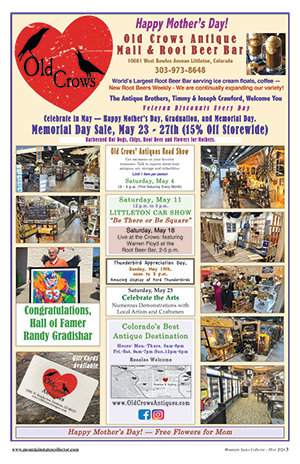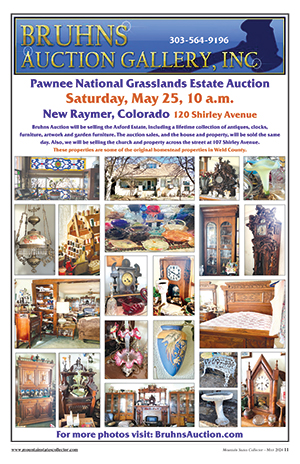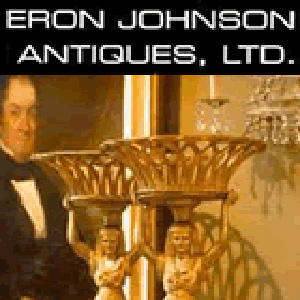 By Carol J. Perry
By Carol J. Perry I was a lucky little kid. My Dad worked for Parker Brothers, the famous Salem, Massachusetts game manufacturer. I was raised, it seems now, amidst a cheerful, colorful clutter of wonderful games.
Sometimes I was allowed to visit the big old rambling factory where Daddy was foreman of the Box Department. I watched, fascinated, as bright, shiny paper labels passed quickly over rollers revolving in trays of steaming hot glue. (The glue came from Lepages in nearby Gloucester, and contained some fish by-products which gave it a unique fragrance!) Upstairs, on the top floor, was where the famous “Pastime Puzzles” were made. There a special crew of women (never men) operated the jigsaws. Sometimes they cut pieces into fanciful shapes like birds and rabbits, and often worked their own initials into the puzzles.
 Today, many of the games I played and watched being manufactured are being avidly sought by collectors. The idea of games as collectibles wasn’t a widespread one until fairly recently, even though the games themselves have been part of America’s everyday life for generations.
Today, many of the games I played and watched being manufactured are being avidly sought by collectors. The idea of games as collectibles wasn’t a widespread one until fairly recently, even though the games themselves have been part of America’s everyday life for generations.Back in the middle of the 19th century, thanks to the industrial revolution, rich and poor Americans alike found that they had some free time. There was a need for leisure activities, and American entrepreneurs were quick to produce some acceptable amusements for the ladies and gentlemen of the day. It was important that these distractions compromise no Victorian virtue. Playing cards were out (the devil’s picture books.”) So were dice (Satan’s playthings.”) It was the perfect time for the “board game” to become part of the American scene.
The board game, which means exactly what it says, a game played on a board, is actually an extremely old pastime. At a site near Ur of the Chaldees an archaeologist dug up several sets which appear to be forerunner of backgammon. These boards, inlaid with lapis lazuli, have been dated as early as 3000 B.C.
 The very first American board game is generally considered to be The Mansion of Happiness. Produced and developed in 1843 by the W. & S.F. Ives Co. of Salem, the game was clearly a moral one. The daughter of a New England clergyman thought it up The hand-colored game let players embark on a journey from squares marked “Justice” and “Piety,’ past such dangers as “Cruelty,” “Immodesty” and “Ingratitude,” all the way to “Eternal Happiness.”
The very first American board game is generally considered to be The Mansion of Happiness. Produced and developed in 1843 by the W. & S.F. Ives Co. of Salem, the game was clearly a moral one. The daughter of a New England clergyman thought it up The hand-colored game let players embark on a journey from squares marked “Justice” and “Piety,’ past such dangers as “Cruelty,” “Immodesty” and “Ingratitude,” all the way to “Eternal Happiness.” Another of the very early games bore a manufacturer’s name which is still a familiar one to today’s game players-Milton Bradley. Bradley was one of the first major game publishers in the country. His 1860 board game, The Checkered Game of Life relied heavily on moral instruction. The object of the game was to move a token through School, Honor and Truth until finally arriving at Happy Old Age. Of course, such pitfalls as Crime or Idleness could lead the unwary player into Poverty, Disgrace and – ultimately – Ruin. Then during the Civil War Bradley thought up something he called Games For Soldiers. This was a package of games made of lightweight pasteboard, adding little weight to the soldiers’ pack. After the war games became the national rage. Wise hostesses often included a few games as ice-breakers. Games for the whole family were popular. Of course, they had to teach moral or ethical lessons.
Today’s collectors of 19th and 20th century board games are intrigued by the many things these colorful amusements of the past tell us about life in America a century or more ago. Times changed, and so did the objectives of the games people played. While Milton Bradley’s Checkered Game of Life offered “happy old age” as the winner’s prize, a couple of decades later a teenager named George
 Parker invented a game with a different kind of reward. Parker’s Banking offered players a chance to make 10% interest on “investments.” Parker had enjoyed playing games as a kid, even though he thought that Mansion of Happiness was dull and altogether too preachy. Sixteen-year-old George’s game promised that instead of joy in the next world, the smartest player would get the most money in this one. Parker’s friends really liked playing the game and he figured that other people would too. So he spent forty dollars he’d earned picking berries to have 500 sets of Bankino printed up. He spent his school vacation calling on Boston stores. The game was a hit and Parker Brothers was born. That was in 1883. By 1887 Parkers had bought out w. & S.B. Ives, and by 1888, Parker and two of his brothers had thirty different games for sale in America’s stores.
Parker invented a game with a different kind of reward. Parker’s Banking offered players a chance to make 10% interest on “investments.” Parker had enjoyed playing games as a kid, even though he thought that Mansion of Happiness was dull and altogether too preachy. Sixteen-year-old George’s game promised that instead of joy in the next world, the smartest player would get the most money in this one. Parker’s friends really liked playing the game and he figured that other people would too. So he spent forty dollars he’d earned picking berries to have 500 sets of Bankino printed up. He spent his school vacation calling on Boston stores. The game was a hit and Parker Brothers was born. That was in 1883. By 1887 Parkers had bought out w. & S.B. Ives, and by 1888, Parker and two of his brothers had thirty different games for sale in America’s stores. Parker Brothers has always been what, in today’s terminology, would be called “trendy.” When the country was seriously reading Horatio Alger novels, which told stirring tales of young men rising from humble beginnings to the top of their chosen fields, Parker published The Office Boy. Here players could follow the fortunes of an ambitious boy who could work his way up to Head of the Firm. When gold was discovered in Alaska, Parker was right there with Klondike, a game which let players search for gold in the comfort of home. When Sherlock Holmes became the hero of the literary world, Parker Brothers marketed The Game of Sherlock Holmes. With the advent of the automobile, a series of popular games featuring bicycles made way for The Motor Carriage Game, complete with breakdowns and flat tires.
Even when the great depression hit the country, board games weren’t doomed. In fact it was the depression which moved a salesman from Pennsylvania to design a game inspired by happy days when he used to take his family to Atlantic City for holidays. Charles Darrow based his game on buying and selling New Jersey real estate. He called it Monopoly. George Parker wasn’t crazy about the game when Darrow offered it to him. It violated two cardinal rules for board games – it takes too long to play and the directions seem complicated. Parker Brothers turned it down at first, but Darrow persisted and they eventually introduced it in 1935. It is still the best selling board game in the United States and is published in many other languages around the world.
 Many collectors admire the early games more for the graphic art on their boxes and boards than for their entertainment or educational content. The artwork on these games offers a nostalgic and often very funny glimpse of the fashions, activities and attitudes of the past. The multicolored boards produced during the mid to late 1800s are especially valuable because they were usually printed by a lithography process. McLoughlin Brothers Inc. made the very nicest ones and their games present a real challenge to the collector. They stopped production in 1920 and in addition to their wonderful box covers and spectacular board designs, their games often included lead playing pieces, making them even more desirable. If you feel that you must have a McLoughlin for your collection, be prepared to part with several hundred dollars for a nice one.
Many collectors admire the early games more for the graphic art on their boxes and boards than for their entertainment or educational content. The artwork on these games offers a nostalgic and often very funny glimpse of the fashions, activities and attitudes of the past. The multicolored boards produced during the mid to late 1800s are especially valuable because they were usually printed by a lithography process. McLoughlin Brothers Inc. made the very nicest ones and their games present a real challenge to the collector. They stopped production in 1920 and in addition to their wonderful box covers and spectacular board designs, their games often included lead playing pieces, making them even more desirable. If you feel that you must have a McLoughlin for your collection, be prepared to part with several hundred dollars for a nice one. Sometimes the work of a particular artist makes a game especially valuable. A 1921 Parker Brothers game called Soldier Ten Pins featuring art by Maxfield Parrish brought $1700 at a 1998 auction.

















Follow Us